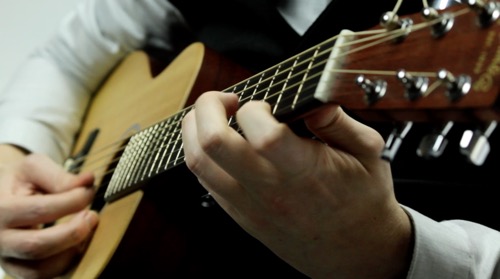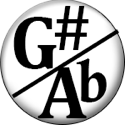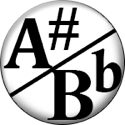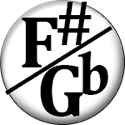Improvising Minor Pentatonic

Hi. This is Hub Guitar.
Let's do some improvisation with the minor pentatonic scale.
This is probably the most popular guitar scale to use in improvisation. It's easy to play, and it lends itself to a ton of the most popular phrases in guitar history.
You can use this scale in a ton of ways, but for now we're going to use it to improvise on a minor key background track.
Let's start by taking a look at the scale. We'll do it in G minor here.
That was an up and down. Now we are going to play it up and down changing direction.
Now we are going to write a small melody, just pick a few notes and see if we can assemble a little melody from that.
We can also mix long notes and short notes
So this is a very repetitive background track that I'm using, and I think that's a good thing in the beginning. So now we are going to play along with the background track and see what we can come up with. So these are just couple simple ideas based on the exercise we did. So take the scale on your on hands, see you can come up with some melodies that you like. The pentatonic scale are really great scale to start improvising with because it fits pretty comfortably and it's pretty easy to play, and you can just concentrate on those notes sound good.
What’s a Minor Pentatonic?
The minor pentatonic scale is a sequence of five (penta) notes (tonic).
We can think of these notes as a set taken from the major scale, with a few alterations: R, ♭3, 4, 5, ♭7.
But rather than comparing it to the major scale, it’s easier to imagine this series of notes as a minor scale in which two notes are omitted. The missing notes are the second degree and the sixth degree.
The minor pentatonic scale is used for many purposes. Here we will use it to improvise a solo in a minor key.
A closer examination reveals an interesting point about these two missing notes: they are both a half step away from another note in the scale. These half steps are the main causes of dissonance; two notes a half step apart, played together, will tend to “clash”.
Building a Minor Scale

Removing these two notes takes out some possible dissonanceRefers to the quality of two or more notes which do not have strong harmonization. This is because the notes vibrate at frequencies which have some conflict, and this conflict is audible to the human ear.:
Building a Minor Pentatonic Scale

G Minor Pentatonic Scale on Guitar
Let’s start by making sure our minor pentatonic pattern is under our fingers. You may be familiar with this scale, but play it up and down to ensure you’ve got it down.
Backing Track: G Minor Pentatonic
The backing track is in G minor and uses the chords Imin, IVmin and ♭VIImin. The track has drums, piano, bass, and several guitar parts. We’ll use this track for our improvisation.
Minor Pentatonic Improvisation Exercises
- Play the pentatonic scale ascending.
- Play the pentatonic scale descending.
- Play the pentatonic scale ascending & descending.
- Play the pentatonic scale ascending & descending, but changing directions frequently; (eg, stop midway and reverse directions).
- Try to write a short melody for the track.
- Try skipping notes or skipping strings.
- Try holding some notes out for much longer than others; play long notes followed by bursts of shorter notes.
- Try imitating some of the rhythms you hear in the track, and using them for your improvisation.
 As the creator of Hub Guitar, Grey has compiled hundreds of guitar lessons, written several books, and filmed hundreds of video lessons. He teaches private lessons in his Boston studio, as well as via video chat through TakeLessons.
As the creator of Hub Guitar, Grey has compiled hundreds of guitar lessons, written several books, and filmed hundreds of video lessons. He teaches private lessons in his Boston studio, as well as via video chat through TakeLessons.











